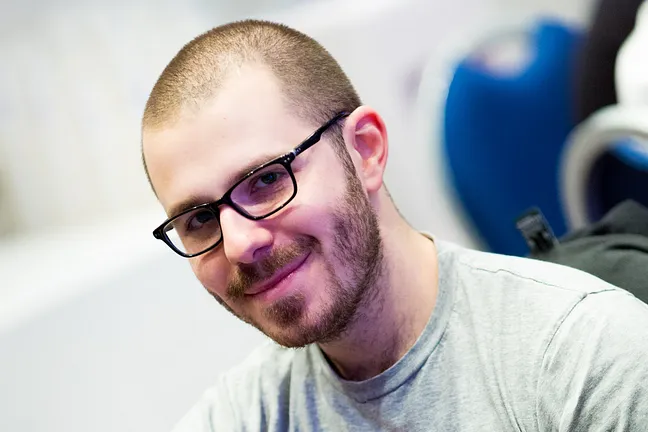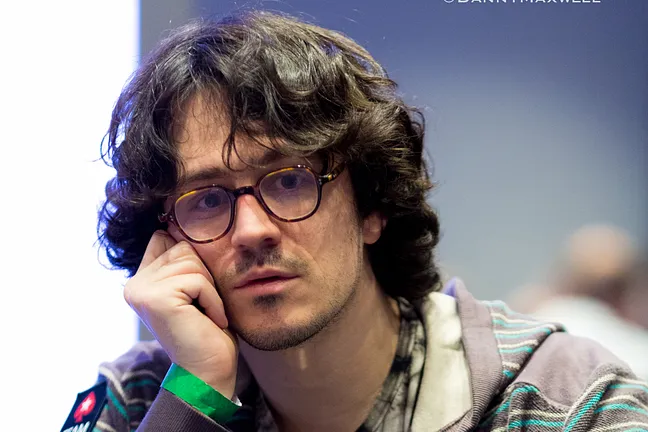The “Shot Clock” idea has surfaced its head again recently. Programs like Shark Cage – where players have a 30-second shot clock (and some back up time bank chips) – have brought it to the forefront of discussions once more.
Players such as Daniel Negreanu and Gus Hansen have been very vocal in their support for a shot clock in the past as they think excessive tanking is a blight of the live game. As far back as October 2012 Howard Swains wrote a piece on the subject for the PokerStars Blog. And just over a year ago, our very own Donnie Peters and Chad Holloway debated the idea in this article.
This year, at the 2015 APPT Aussie Millions, the organizers decided to use AU$100,000 Challenge as a testing ground for a 30-second shot clock. PokerStars Team Online Isaac Haxton Tweeted his support at the time:
PokerNews caught up with Haxton just before he started Day 2 of the special High Roller. We asked him about how it worked in the AU$100,000 Challenge and if it should be added to any of the event on the EPT.
“The way it was implemented was the dealer had a stopwatch and was instructed to approximately count ten seconds in his head. If a player hadn’t acted within those ten seconds then the dealer would start the shot clock and that player would have 20 more seconds to act. That sounds a little bit sloppy but in practice no one was ever upset that they had eight (rather then ten) seconds or anything like that. I’d say, in terms of the implementation, it went really smoothly.
“Honestly, the thing I liked most about it was that it introduced a new challenge to the game. I’m not really one of the people who are constantly upset at the slow pace of play in live tournaments; I don’t think it’s a huge problem that needs to be resolved. I like the shot clock as it introduces an extra dimension and challenge to the game which people had a lot of fun with.
“The first obvious place to implement a shot clock on the EPT is the Turbos we run on the last day of every festival; seems like the perfect place to trial it. If that proved popular and successful I think we could maybe move it over onto the High Rollers or some of the late night side events. I don’t think implementing it in Main Events should probably be on the agenda in the immediate future. I can see it happening eventually but that should be the last place to go after it’s proven successful over a solid period of time in tournaments with a more experienced field”
Pratyush Buddiga also played in the AU$100,000 Challenge and we spoke to him as well.
“I think it’s a good idea for high rollers just because the players in those tournament aren’t intimidated by making quick decisions. It’s actually probably more useful in main events as players tank over simple decisions but the problem is that I think it would intimidate a lot of amateurs. Even though I like it personally, I feel like it would be bad for main events.
“I think having it for most high rollers is fine as long as time bank chips are included as well. I’d like to see it in the 10Ks on the EPT. I don’t mind giving players more time to think in the 100Ks as I don’t think anyone who plays in them consistently is overusing their time.”
It’s fair to say that poker players have the best intentions when it comes to the running of the game but don’t always think of the practicality of trying to implement new ideas. We needed to hear from the other side of the fence so talked to Neil Johnson, Head of Live Poker Operations for PokerStars Europe.
“I personally am still against the shot clock just because of the difficulties involved in making it 100% fair. We’ve used the shot clock extensively on Shark Cage and I’ve seen the pros and the cons. I don’t believe it speeds up the game as much as people think it does. Say three people in the hand take the full 30-second allowance pre and post flop; turn and river you’re still into a six/seven-minute hand.
“I think the dealers have enough to pay attention to in the game; running the game affectively as well as keeping an eye out for any funny business or shenanigans and having them constantly looking down at a timer is a poor use of their time.
“It’s something that I welcome when we’re technologically able to do it right. Two or three years from now, when the tables are all wired, I might be able to make my move and press a button and then action moves over to you and that could work.
“We already have a solution to excessive tanking: call the clock! There’s the rule to fix it. It’s also a little unfair to say that 30 seconds in Level 2 at 50/100, facing a 2.2-times raise is the same situation as 16 players left with 100K pay jumps, facing a 2.2-times raise. The situations are different and one requires more time to think and the other doesn’t.
“At this point in time though, I don’t think it’s ready for primetime, and until it is, I’m not prepared to put it in.”
This is a topic that has been rumbling on for a few years now and will continue to raise its head in the future. Other tours and destinations will continue to trial the format but it’s safe to say that we won’t be seeing it introduced on the EPT until it’s watertight fair and can be carried out when technologically and logistically possible.
Tags:
PokerNews Live Blog FeatureDaniel NegreanuGus HansenIsaac HaxtonNeil JohnsonPratyush Buddiga


![]()
![]()
![]()
![]()
![]()
![]()
![]() , but the
, but the ![]() on the turn did make a difference. The
on the turn did make a difference. The ![]() on the river didn't, and Smith left in 15th place.
on the river didn't, and Smith left in 15th place.









